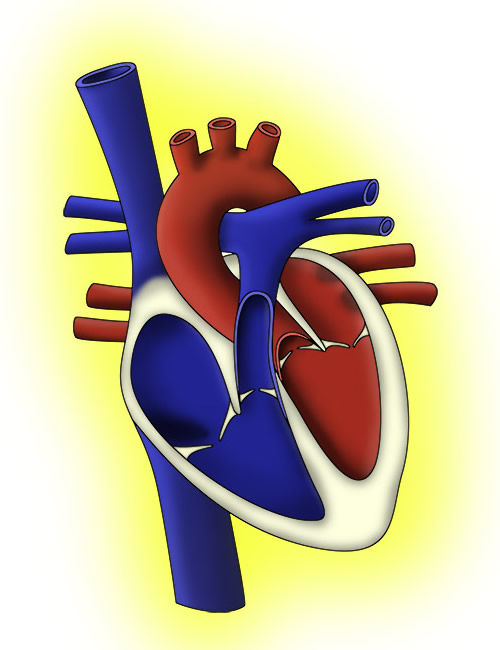
In order to fully understand the pathophysiology of the different types of shock and cardiovascular system dysfunction, an understanding of basic cardiovascular physiology and terminology is required.
Stroke volume: Stroke volume varies with the force of ventricular contraction (myocardial contractility), the volume of blood in the ventricle at the end of diastole (preload) and the outflow resistance (afterload).
Preload: Preload refers to the volume of blood returning to the right or left ventricle during diastole. Starling’s law states that the force of myocardial contraction is proportional to the initial myocardial fibre length, up to a point. This means that the larger the volume of blood returning to the heart after each contraction, the larger the end diastolic ventricular volume. This volume causes an increase in the stretch of the myocardial fibres causing a bigger force of ventricular contraction and a larger stroke volume.
Preload can be thought of as a measure of ‘filling’. It will drop if a patient is under-filled due to dehydration or bleeding. A fluid bolus (challenge) will increase the preload as it increases the circulating volume and therefore the volume of blood returning to the heart with each beat. There is a point that the myocardial fibres becomes overstretched if the preload is too great, and at this point they can lose their contractility. Clinically this presents as heart failure.
Myocardial contractility: Myocardial contractility is the force with which the myocardium contracts, which is a major determinant of stroke volume. Contractility is increased by various factors such as increasing preload, increased sympathetic nervous system activity (stress response) and inotropic drugs (adrenaline). Contractility is reduced by low preload (hypovolaemia), cardiac disorder (e.g. heart failure, arrhythmias), hypoxia, hypercapnoea, acidosis and electrolyte disturbances.
Afterload: Afterload is the ‘load’ against which the heart must contract to eject blood. It is the tension in the left ventricle during systole. Increased afterload results in increased myocardial work and a decreased stroke volume. One component of afterload is the systemic vascular resistance.
Systemic Vascular Resistance: Systemic vascular resistance (SVR) or peripheral vascular resistance (PVR) is the resistance of the arteries and arterioles to the flow of blood pumped out of the heart. Small changes in the diameter of arterioles produce large changes in the SVR and therefore afterload. SVR is directly proportional to blood pressure and a drop in SVR leads to a drop in the arterial blood pressure.
Cardiac Output: Cardiac output (CO) is the volume of blood pumped by the heart per minute. It is a product of the stroke volume (SV) and heart rate (HR).
CO is therefore increased by increasing heart rate, increasing preload, increasing cardiac contractility and decreasing afterload.
Blood pressure: The circulation is driven by blood pressure. Too high a pressure would lead to damage to the vessel walls and haemorrhage while too low a pressure fails to adequately perfuse tissues leading to ischaemia and potentially end organ damage.
The mean arterial pressure (MAP) is proportional to the CO and the SVR.
Thus, arterial pressure varies with changes in cardiac output (stroke volume and heart rate) and vascular resistance.
Shock: Shock can be defined as acute circulatory failure leading to inadequate tissue perfusion causing cellular hypoxia. This leads to cellular disorder and failure of multiple organs. Hypotension can be thought to be synonymous with shock but occasionally cellular perfusion can be inadequate despite a normal blood pressure.